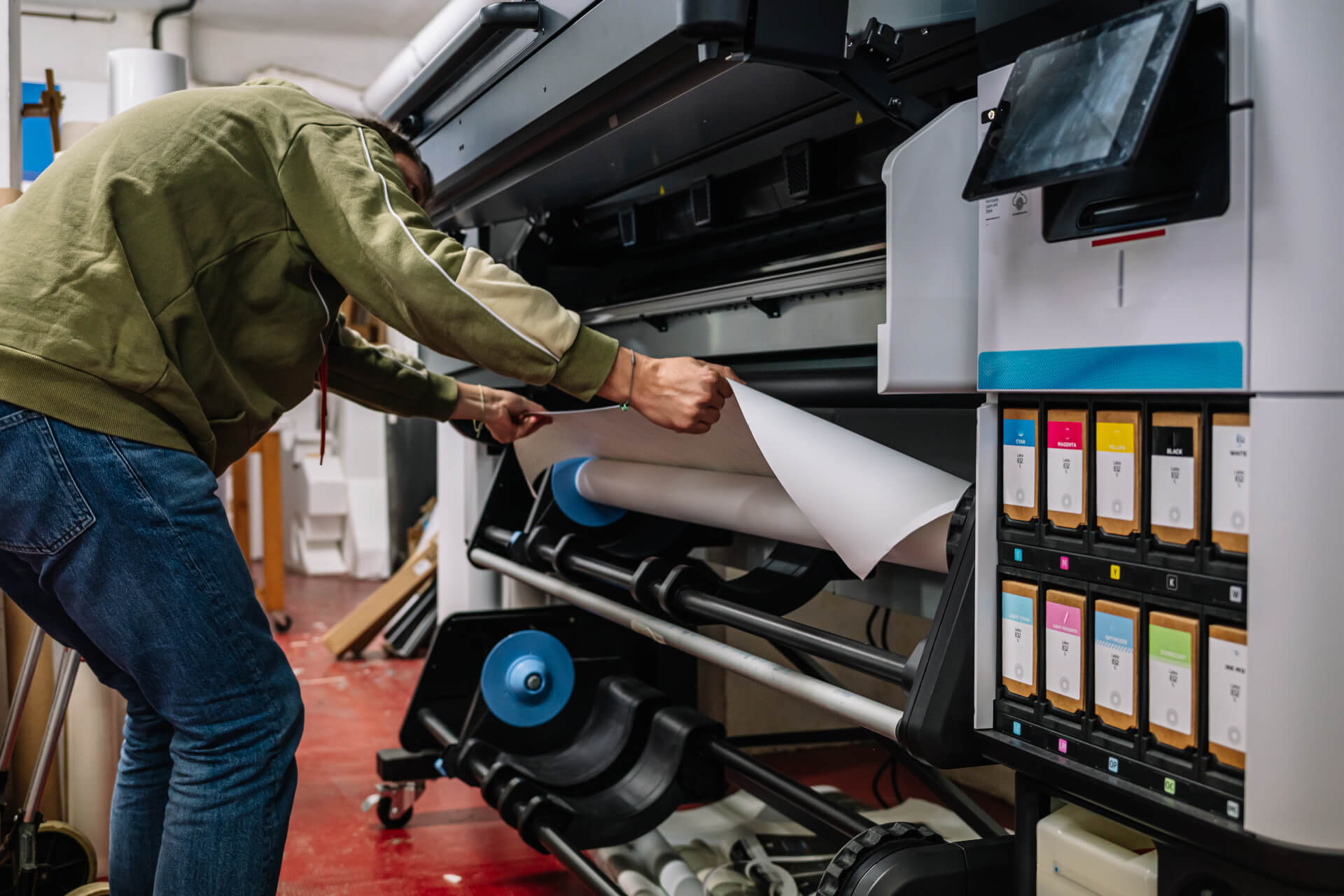Reduce Material Waste in Wide Format Printing with Print MIS
Wide format printing is a high-cost business, where every substrate, ink, and finishing material adds up quickly. Unlike smaller print jobs, wide format production relies on expensive materials such as vinyl, canvas, roll media, and rigid boards. Any waste in these materials translates directly into higher costs and reduced profit margins.
Waste can occur for many reasons—poor material planning, incorrect job setups, overordering, or expired inventory. Additionally, print errors and rushed production can lead to costly reprints and unnecessary material loss.
A print MIS plays a crucial role in minimising material waste by introducing real-time inventory management, automated job tracking, and smart production scheduling. This not only cuts costs but also improves workflow efficiency and sustainability.
The Costs of Wasted Materials in Wide Format Printing
In wide format printing, materials are one of the largest expenses. Without proper planning and tracking, unnecessary waste can significantly impact profitability.
Here are some of the most common causes of material waste:
Expensive Substrates Going to Waste
Wide format print software relies on materials like vinyl, canvas, and roll media, which can be costly. Poor inventory planning or incorrect order execution often results in offcuts, scrap materials, or entire jobs being discarded.
Poor Print Layouts and Offcuts
A single large print run that is not planned properly can generate excessive offcuts and material waste. Without optimised layout tools or smart job planning, print businesses end up wasting more material than necessary.
Incorrect Artwork Setup Leading to Reprints
Errors in artwork files, colour profiles, or print specifications often result in misprints and reworks. Reprinting large format jobs wastes materials, ink, and production time—all of which add up to increased costs.
Overordering or Expired Inventory
Many print businesses order materials in bulk to reduce costs, but without proper inventory management, they risk stockpiling materials that expire or become obsolete before they can be used.
Understocking Leading to Rushed Orders and Waste
On the flip side, not having enough stock can force businesses into last-minute purchases at higher costs. Rushing production to meet deadlines often leads to errors, waste, and increased expenses.
How Print MIS Reduces Waste in Wide Format Printing
A print MIS helps reduce material waste by introducing automation, improving inventory tracking, and ensuring jobs are set up correctly before production begins. Here’s how:
Real-Time Inventory Management
With wide format production management, businesses can track inventory levels in real time, ensuring they only order what’s needed and preventing excessive stockpiling. This minimises waste and optimises material usage.
Automated Reordering to Prevent Over- or Understocking
A Print MIS integrates with inventory systems to trigger automated reordering when stock levels fall below a certain threshold. This eliminates last-minute, rushed orders and prevents materials from expiring due to overordering.
Proofing Automation to Prevent Reprints
Reprints are one of the biggest causes of material waste. With wide format print software, businesses can use automated proofing tools to ensure artwork accuracy before printing begins. This prevents errors in:
- Colour mismatches
- Incorrect sizing and layouts
- Low-resolution images or incorrect file formats
By catching errors before production, a print MIS helps prevent wasteful reprints and lost materials.
Real-Time Production Tracking for Smarter Job Assignments
A wide format production management system allows businesses to track jobs in real time, ensuring that jobs are assigned to the right machines and resources based on availability. This prevents overloading certain printers while others sit idle, reducing downtime and inefficient material usage.
Benefits of Reducing Waste with Print MIS
Lower Material Costs
Smart inventory tracking and job planning ensure that every substrate, ink, and finishing material is used efficiently.
Fewer Reprints
Automated proofing catches errors early, preventing costly material and ink waste.
Better Inventory Control
Automated reordering ensures materials are available when needed, without the risk of excess stock expiring.
Increased Efficiency
Smart job tracking and scheduling ensure production runs smoothly with minimal material loss.
Greater Sustainability
Reducing waste and unnecessary reprints supports eco-friendly business practices and improves overall efficiency.
Conclusion
Material waste is one of the biggest cost factors in wide format printing. Poor inventory planning, mismanaged orders, and reprints all contribute to higher production costs and lower profitability.
By implementing a print MIS, businesses can automate inventory tracking, reduce errors, and streamline production, leading to significant material savings. With the right wide format print software, print businesses can optimise inventory, eliminate unnecessary waste, and increase overall efficiency—all while maintaining high-quality print output.
If you’re struggling with high material waste costs, now is the time to invest in a Print MIS to streamline your workflow and boost profitability.
